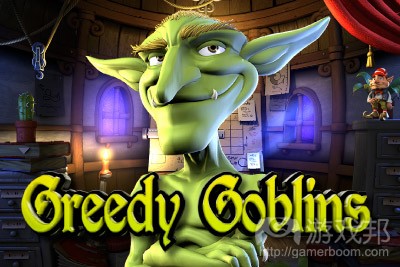每日观察:关注手机应用领域投资与并购情况(4.30)
1)投资银行Digi-Capital第一季度手机应用调查结果预测,2017年手机应用年收益将达700亿美元,游戏收益仍然占据主要部分,但非游戏应用收益比例则将从原来的26%上升至2017年时的51%,其2013至2017的复合年增长率达61.3%。
在过去四年中,手机应用使用率增长5倍,2013年在媒体消费量中占比将近20%。从2009至2013年,手机应用复合年增长率为50%。
与此同时,手机应用投资自2013年第一季度以来双倍增长,2013年投资额达100亿美元。
2013年手机应用合并与收购成交额为350亿美元(不包括Facebook斥资160亿美元收购WhatsApp)。在2014年第一季度,手机应用并购成交额为70亿美元,同比上年双倍增长。
含IAP功能的免费应用所占收益超过90%,但并非所有应用类型均是如此。IAP在游戏应用中最具盈利性,此类游戏所占下载量达40%,收益占比为70%。但非游戏应用下载量虽然占比60%,收益却仅占比26%。
2)娱乐软件协会(ESA)最近报告指出,59%美国人是游戏玩家,平均每户美国家庭拥有至少两名游戏玩家。
这些游戏玩家平均年龄为31岁,事实上年龄在36岁以上的玩家数量还超过了18-35岁群体,以及不足18岁的玩家群体。这些玩家中的男性占比为52%。从2012至2013年,年龄在50岁以上的女性玩家数量则增长了32%。
平均每户美国家庭拥有至少一台专用主机设备,PC或智能手机,但69%家庭使用主机玩游戏,用智能手机玩游戏的比例为53%。但与2012年相比,玩家在智能手机上体验游戏的行为同比增长了22%。
玩家最青睐的游戏类型仍然是动作和射击游戏。ESA发现这些玩家所接触的动作类游戏占比31.9%,射击类游戏占比20%。
玩家在休闲和社交游戏中的投入时间最多,这两类游戏占比30%(其中以免费手机游戏为主),比2012年增长了55%。益智、问答、纸牌游戏占比28%,而动作、体能、战略和角色扮演游戏则合计占比24%。
美国用户在游戏(包括硬件、软件和配件)中的总投入为215.3亿美元;2013年玩家在数字游戏(包括下载、订阅和微交易)上的投入首次超过实体零售游戏,数字游戏在所有软件收益中占比高达53%。
3)据Venturebeat报道,DFC Intelligence分析师David Cole在最近采访中表示,付费AAA游戏在PC平台仍然极具盈利性,而像《坦克世界》、《英雄联盟》和《Dota 2》这类免费模式的游戏也在不断发展,2013年有地、10款网络PC游戏的微交易销售额超过1亿美元。其中之一是《魔兽世界》,这类PC游戏在亚洲利润甚高,中国PC游戏市场产值就达到了87亿美元。
4)据Re/code报道,有消息称微软计划在今年9月与百视通(上海文广新闻传媒集团旗下子公司)合作向中国推出Xbox One。
微软Xbox的官方YouTube帐号所发布的视频显示,微软Xbox首席营销和战略官Yusuf Medhi指出,“我们首次将Xbox One及其全套游戏和娱乐系统推向中国……”,并表示计划向该平台推出西方与中国市场版本的游戏。
5)据gamasutra报道,Zynga联合创始人Eric Schiermeyer在最近采访中分享了自己成立的新工作室Luminary及其首款游戏《Greedy Goblins》的相关详情。
Schiermeyer于2011年离开Zynga,并于去年在旧金山成立Luminary,这家7人工作室现在准备发布首款手机游戏《Greedy Goblins》。(本文为游戏邦/gamerboom.com编译,拒绝任何不保留版权的转载,如需转载请联系:游戏邦)
1)Mobile apps could hit $70B in revenues by 2017
Dean Takahashi
What’s next in mobile? Find out at MobileBeat, VentureBeat’s 7th annual event on the future of mobile, on July 8-9 in San Francisco. Register now and save $400!
Mobile apps are on a path to reach $70 billion in annual revenue by 2017. And while games drive the majority of app revenue now, they won’t stay on top of the heap much longer.
Digi-Capital, an investment bank for mobile apps and games, said in its first quarter mobile apps study that non-game apps could double their percentage share of total app revenue from 26 percent to 51 percent by 2017, thanks to a 61.3-percent compound annual growth rate from 2013 to 2017.
“Everyone knows that mobile apps are hot, and that games have taken the lion’s share of revenue so far,” said Tim Merel, managing director at Digi-Capital in London. “We think the balance is going to change, with other app categories using new approaches to win. We’re already seeing SaaS-like App as a Service models emerging, and we can’t wait to see what happens next.”
Mobile usage has grown five times in four years to approximately 20 percent of media consumption last year. From 2009 to 2013, the compound annual growth rate for mobile apps was 50 percent.
Meanwhile, mobile app investment is gathering steam. It has doubled across categories since the third quarter of 2013, with $10 billion invested in the last 12 months.
VentureBeat recently asked mobile developers how to best monetize their games.
Mobile app mergers and acquisitions accounted for a record $35 billion in the last 12 months, not including Facebook’s $16 billion acquisition of WhatsApp. In the first quarter of 2014, mobile app M&A was $7 billion, or twice the number from a year ago. The acquisitions are split between strategies aimed at growth, consolidation, and defensive moves.
Mobile app public and private valuations have also varied significantly across categories, with some app types valued much higher than others relative to their economic performance. For investors and acquirers, it appears that not all apps are created equal, Merel said.
Free apps with in-app purchases account for more than 90 percent of revenue, but that’s not the case in all app categories. In-app purchases have worked most effectively for monetizing games, accounting for 40 percent of downloads and 74 percent of revenues. But in-app purchases are less effective outside of games, accounting for 60 percent of downloads and only 26 percent of revenue for non-game apps.
The new development is the adoption of the “app-as-a-service” model, which is similar to the software-as-a-service model in other industries.
“The apps market is also creating billion dollar companies at what looks like an accelerating pace globally, and we expect to see as many Asian as Western companies delivering outsize returns for entrepreneurs and investors,” Merel said.(source:venturebeat)
2)Gaming advocacy group: The average gamer is 31, and most play on a console
Jeffrey Grubb
Gamers are getting older, and more of them are women than ever before.
Industry advocacy group the Entertainment Software Association, which operates the Electronic Entertainment Expo tradeshow and lobbies on behalf of publishers and developers, revealed a number of facts and figures about the gaming industry today. The report finds that 59 percent of Americans play games and that the average household in the U.S. has at least two gamers.
“People of all ages play video games,” Gains Through Gaming Lab co-director Jason Allaire said in regard to the report. “There is no longer a ‘stereotypical game player,’ but instead a game player could be your grandparent, your boss, or even your professor.”
The ESA’s report reflects that sentiment throughout.
The average age of someone who plays games is 31 years old. In fact, more gamers are over the age of 36 than between the ages of 18 to 35 or under the age of 18. They are also mostly men, but by a slimming margin. Men make up 52 percent. From 2012 to 2013, the number of women gamers over the age of 50 grew by 32 percent.
When it comes to how they play, most are still using a console. The average U.S. home owns at least one dedicated console, PC, or smartphone, but 68 percent of those that do use the console for gaming. That’s compared to 53 percent for smartphones.
Despite that disparity, smartphone gaming is up 22 percent year-over-year compared to 2012.
Gamers are still buying more action games and shooters than anything else. The ESA finds that action makes up 31.9 percent while the gun-heavy titles make up another 20 percent. The rest of the pie chart splits between sports, role-playing, and a variety of other genres.
Of course, those are for premium-priced games that are for sale online or through retail. In terms of what people are playing the most, casual and social games take the top spot at 30 percent. That genre, which specializes in free-to-play mobile games, is up 55 percent from 2012. Puzzle, trivia, and card games make up another 28 percent. Clumped together below that is action, sports, strategy, and role-playing at 24 percent.
The ESA also reports that the total spending on games in the U.S. was $21.53 billion. That includes software, hardware, and accessories.
Finally, for the first time ever, digital spending on gaming outpaced physical retails sales in 2013. Digital games, which includes full downloads as well subscriptions and microtransactions, made up 53 percent of software revenue.(source:venturebeat)
3)League of Legends, World of Tanks help PC spending surpass console gaming worldwide, proclaims analyst
Jeffrey Grubb
League of Legends made a couple hundred million dollars last year. That is just one of a number of games that one analyst claims are leading the resurgence of the PC as the dominant gaming platform in terms of spending.
The growth of free-to-play games on PC as well as the continued success of digital platforms like Steam have pushed PC spending beyond consoles worldwide, according to industry analyst David Cole of DFC Intelligence. In an interview with PCR, Cole explained that while premium-priced triple-A games continue to make quite a bit of money on PC, free-to-play releases like World of Tanks, League of Legends, and Dota 2 are still growing to new heights. In 2013, 10 online PC games made more than $100 million in microtransaction sales. One of those was World of Warcraft, which made that money on top of the millions it generates from subscriptions. Those kinds of PC games are especially lucrative in Asia. The Chinese PC gaming market generated $8.7 billion on its own.(source:venturebeat)
4)Microsoft will launch Xbox One in China in September
By Christian Nutt
Today, Re/code broke the news that Microsoft plans to launch the Xbox One in China this September. According to its report, the company will be partnering with Shanghai-based BesTV to launch the console — as expected.
Though the news came in the form of a rumor, it quickly seemed to be confirmed in the form of a video posted to Microsoft’s official Xbox YouTube account.
That video has since been made private, but Gamasutra was able to watch it and transcribe key quotes before it became unavailable.
In the video, Yusuf Medhi, Microsoft’s chief marketing and strategy officer for Xbox, said, “For the first time ever, Xbox One is coming to China with a full games and entertainment system.” Things don’t get plainer than that.
Medhi continued, outlining plans to release both Western and original, Chinese market-focused titles for the platform: “Here at Microsoft we have been on a mission to build the very best gaming and entertainment experiences for gamers everywhere, and in China there are over half a billion gamers, so the opportunity to create global and locally created content to delight millions and millions of gaming families everywhere is something that we’re really passionate about.”
BesTV is a subsidiary of the Shanghai Media Group, and SMG senior VP Zhang Dazhong appears in the video, too. “Why did we choose Microsoft as our business partner? Because Microsoft has created the most amazing family friendly entertainment product in the world. Xbox One,” Zhang said. “We believe that this product will achieve great success in China and our long-term partnership with Microsoft, in my view, is an absolute must. Let’s go Xbox! China’s door is open for you.”
“Xbox One is going to offer an amazing array of experiences for gamers in China. Everything from games to entertainment experiences, fitness and education opportunities,” Medhi said.
Zhang, in the now-removed video
This news comes after the Chinese government recently released the standards that would allow game consoles — banned since 2000 — to go on sale in the country. This was a necessary step in allowing companies, both foreign and domestic, to enter the Chinese market.(source:gamasutra)
5)Zynga expat launches Luminary, a small-scale mobile game studio
By Alex Wawro
Zynga co-founder Eric Schiermeyer shared details on his new studio Luminary and its first game, Greedy Goblins, in an interview published today by VentureBeat.
Schiermeyer left Zynga in 2011, but while he was there he reportedly gained a reputation as the analytics advocate, pushing for games to be designed with an eye towards maximizing player growth and game monetization.
Last summer he started up Luminary in San Francisco with a handful of other game industry veterans, and now the 7-person studio is preparing to release its first mobile game: Greedy Goblins, a competitive “finite runner” that allows players to spend in-game currency or real money to buy resources.
“This is my answer to what I was experiencing over there [at Zynga],” Schiermeyer told VentureBeat while explaining why he’s launched a small-scale mobile studio after spending time at Zynga.
“Our founders have experienced many types of startups and established companies. We’ve learned a lot from those experiences, and this company is an answer.”(source:gamasutra)











































 闽公网安备35020302001549号
闽公网安备35020302001549号